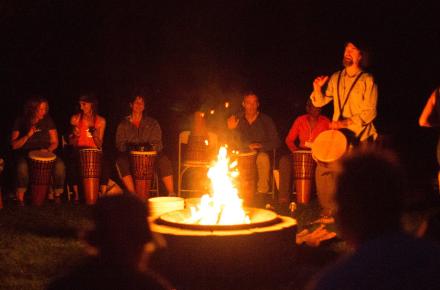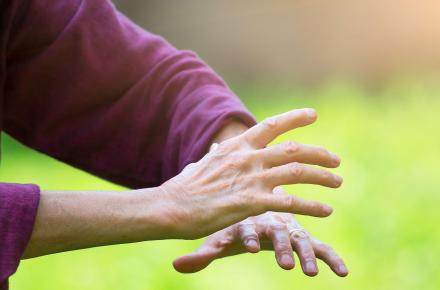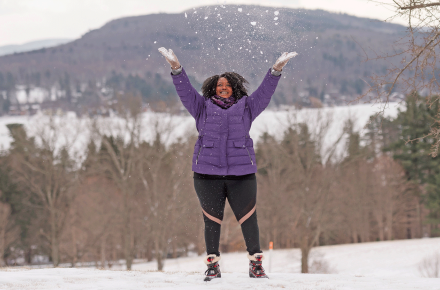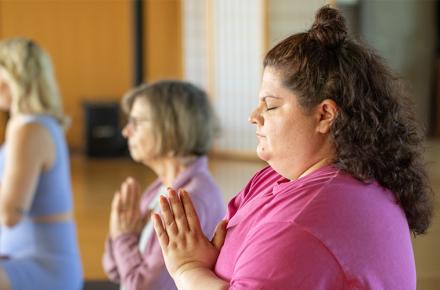Asking the Questions, Questioning the Answers
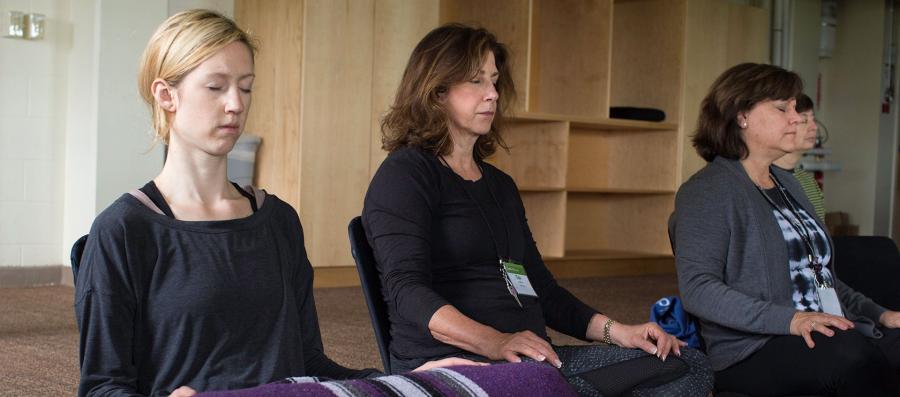
“Wait…what?”
Ever said that in response to something you heard, or read? My husband says this all the time, as does his dad. They say these words so often that we laugh about it. They are, however, two really good words when combined this way. Why? Because we pause with the "wait," and inquire or ask for clarity with the "what."
Dean James Ryan posed this, along with a series of other excellent questions, in his commencement address before the Harvard Class of 2016. Those questions inspired this essay.
Indeed, he said we use these powerful words as a way to seek clarity. We must inquire, and take time for clarity, before we advocate. Or, as the Dean said, “Inquiry over advocacy.”
I found myself saying these very words when I read a recent post in which the following words were used to advocate for the insistence on really straight limbs in certain asanas: "Crooked body, crooked mind." These words were in quotations. I said to myself: "Wait…what?" Did I really just read that? Was the person to whom the statement was attributed (B. K. S. Iyengar) being humorous? What was the specific context in which these words were originally spoken, if they were?
On the one hand, I can see where a straight-limb configuration can be of value for either aesthetic or functional purposes for certain movements and/or poses. And there is always the context to consider. What was this person doing? Why were they doing it? Who was the person who was doing the pose or movement? Were there structural limitations present? Was the person's mind/state affecting their ability to do a given activity, action, position in a certain way? How do we know what we think we know? There is so much to examine. When someone's words are taken out of context we can easily misinterpret what was said. Hence the "Wait…what?"
As teachers, we often try to keep things simple. We don't really know all the reasons or variables that might influence a behavior (physical or otherwise) that we observe. We do our best to teach with clarity, specificity, precision, and/or playfulness, depending upon the situation and what feels appropriate in any given context. We might try to inspire our students to embody a certain shape or idea, and set what we imagine is a high bar of excellence for the tradition/discipline in which we are teaching.
We are dealing with the mind as well as the body in yoga. So I wonder what, specifically, was meant by the words "crooked mind”? And what specifically was meant by the words “crooked body”? The word crook (as a noun) is often seen as a derogatory term used to describe a criminal, a villain, a burglar, etc. Crook might also be used as a verb, as in bend or flex, angle or bow. Crooked as an adjective might mean something is bent, curved, twisted, contorted, or warped. Straight, on the other hand, is that which is without curve or bend. It is a synonym for that which is linear, direct, unbending, or honest. As a noun, it is used in a number of ways.
So, I wonder if body/mind correlations and descriptions like “crooked body, crooked mind,” “motor moron,” or similar sayings can be overly simplistic generalizations that might (in some cases) do more harm than good. These are things we might say, but not really mean, exactly. It depends on the context. They are generalizations that might have a grain of truth in some situations but are probably inaccurate assumptions that might even be perceived as cruel or derogatory judgments. Just think of someone like Stephen Hawking. His body was bent beyond what is conceivable for most of us. Some might describe his body shape as crooked. He could not move or speak without a computer. But what about his mind? His mind did not appear to be crooked, or inflexible. In fact, it was unimaginably flexible, beautiful, and expansive, like the cosmos that he contemplated. I imagine him to have been a beautiful person. Just like the many people who come to yoga with their bodies bent, bowed, and beautiful, and their hearts full of hope and humanity.
I do believe that the body-mind connection is vast, deep, and complex. There is so much to explore here, so much that we don't know. It seems that this intricacy and complexity warrant a serious (and frequently uttered) "Wait…what?"
I wonder if certain oft-repeated descriptive phrases, colorful as they might be, really serve our deeper intention or communicate what we feel truly matters in yoga. Couldn't we at least be more specific about what, exactly, we are positing regarding the correlation between the shape of the body and the state of the mind? There do seem to be deep and profound connections. We might find interesting areas of consensus, or new questions to ask and explore in the quest to deepen our understanding of one another and our own body/mind connection/integration. Perhaps, if we did this, there would be less harm or confusion.
How can we help? Writing this piece is my way of saying that I find correlations like "crooked body, crooked mind," when taken at face value, potentially troubling. Why? Because I don't know if that is really true. And I would never want any person interested in doing Iyengar Yoga to think that their inability to straighten their knee fully in a standing pose or forward bend is necessarily unhealthy or harmful. And I certainly don't want them to think the difficulty they might have in straightening their limbs is a reflection of a "crooked" mind. Sure, certain asymmetries can cause pain and dysfunction, and pain and dysfunction can impact well-being on many levels. More importantly, a person’s body shape or stiffness, or flexibility, or whatever, may or may not be a problem for them. It will end up being a problem if they think that it is. And that is unfortunate. Because it really seems like the best that any of us can really say, with confidence, is that it depends. It depends.
So I am learning to ask myself the following questions again and again:
How might I, as a teacher, help my students live more fully in their bodies using both deliberate practice and playful practice to cultivate greater levels of awareness? How might I help them feel more confident in their bodies and their capabilities, both physically and mentally? How might I facilitate a student's capacity to experience joy, curiosity, and contentment in body, mind, and in yoga? How might I help them breathe more easily in life, and be more at ease within themselves and with others? I think these questions get to the crux of what truly matters.
What truly matters? This is one of the most important questions on Dean Ryan's list. What truly matters in yoga? What truly matters in life? This is a question I ask myself again and again. It is a good one for all of us to ask, again and again. It gets right to the heart of the matter. To the heart of our matter.
This essay was originally published on Carrie’s blog.





























